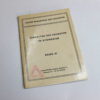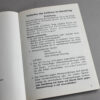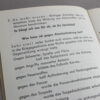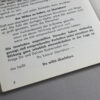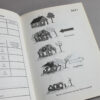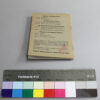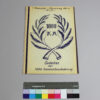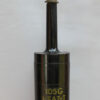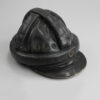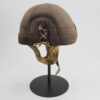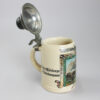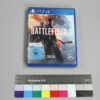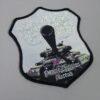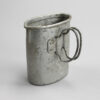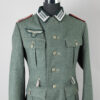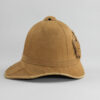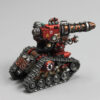Booklet “Behavior of the soldier in nuclear war”, ca. 1950s-1960s
Inventory number: Ü 136
“It depends on you whether you survive!”
At the beginning of the Cold War, the atomic bombs dropped on Hiroshima and Nagasaki were only a few years old. Military experts debated whether the use of nuclear weapons was merely an extension of conventional warfare or a completely new type of war. For the people in the Federal Republic and the GDR, on whose territory the nuclear strikes would mainly have been carried out, the question of how the individual could survive during the nuclear war was given top priority. Both civil defense and the Bundeswehr were concerned with the question of what could be done for personal protection before, during and after a nuclear explosion.
Volume 21 of the “Small Library of the Soldier” deals with the “Conduct of the Soldier in Nuclear War”. It is based on the Central Service Regulations ZDv 3/3 from 1956. To make it easier for soldiers to access the contents of the regulations, their most important statements were often summarized in smaller publications. This task of having important content “at hand” is now performed by the Bundeswehr pocket map, which can literally be carried in the leg pocket at all times.
Due to the acute threat of nuclear war, this knowledge could not just be left to the specialized NBC troops or soldiers near the border: “There is no longer a distinction between front, stage and home war zone!” The booklet was therefore aimed at all soldiers: “Behaviour against nuclear explosive devices must therefore not be special training, like other special branches of the various types of troops, but all training must always and everywhere include protection against nuclear effects.”
In addition to this official training, soldiers had various opportunities to learn about the consequences of a nuclear war. The consequences of the US nuclear strike on the Japanese population and the use of nuclear weapons in Europe were the subject of lively public debate in Germany.
The direct address to the reader and precise instructions on how to behave were intended to counteract powerlessness in the face of the destructive effect of the atomic bomb: “So you know that the effect of the atomic weapon will be terrible – much greater than anything that has ever been seen on the battlefield before, and you also know that you have a chance. It is up to you how big it will be! With this belief in yourself, nuclear weapons have lost some of their terror, the most sinister part.” The main task of the soldier in a nuclear war is therefore to overcome fear: “The scariest thing, however, is the radioactive radiation, because our body has no sensory organ with which to perceive it. We only know that they are there, and we know their effect on the human body. This lack of experience, which at the same time includes knowledge of the terrible effects, turns the technical problem into a psychological one.”
“We must educate ourselves and every soldier to have the will to survive! Hiroshima and Nagasaki prove that it is possible to survive. The number of victims there would not have been nearly as great if people had known about the existence of the A-bomb, if they had been aware of its effect and if they had acted accordingly.” Consequently, the booklet explained the processes of a detonation of a flash of light, pressure wave with suction effect and radiation for the soldiers as simply as possible and recommended countermeasures. Understanding the exact dangers and processes should help to overcome the danger. The focus was on preparing cover: “The modern soldier is either in cover or he is busy building cover!” However, contemporaries were likely to have doubted the effectiveness of the behavioral recommendations when they saw the time sequences described: “So you have at least three tenths of a second to react. That gives the well-trained soldier a chance!”
Object of the month
(short) stories from the depot
Unfortunately, many objects cannot currently be shown in the exhibition for conservation reasons. Here you will find unusual objects and exciting stories of special pieces from the depot


